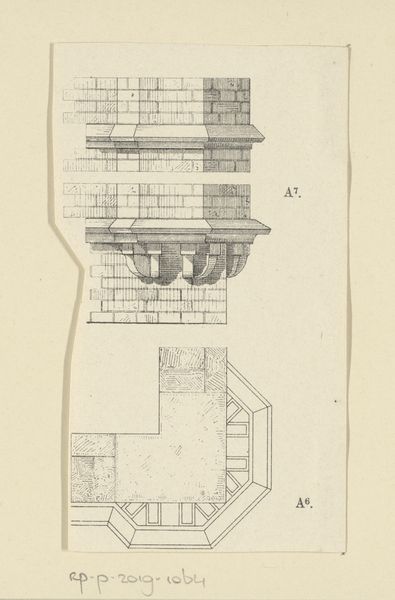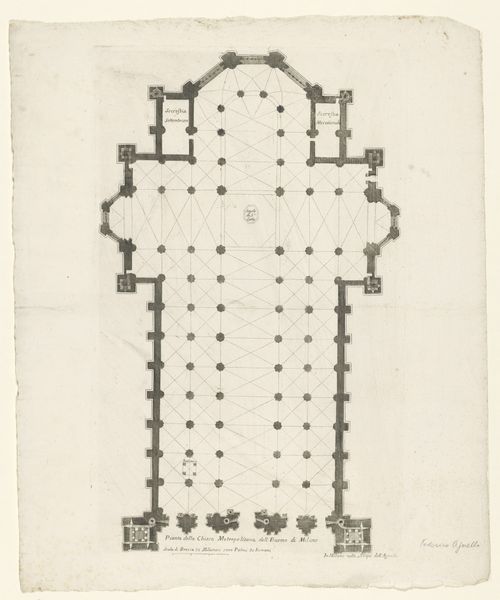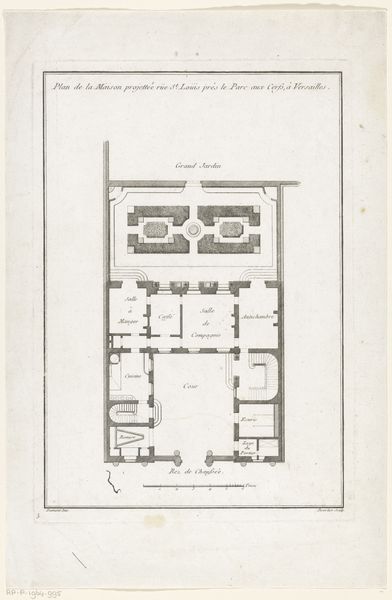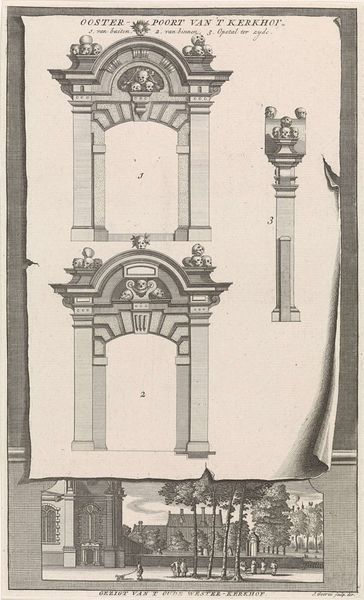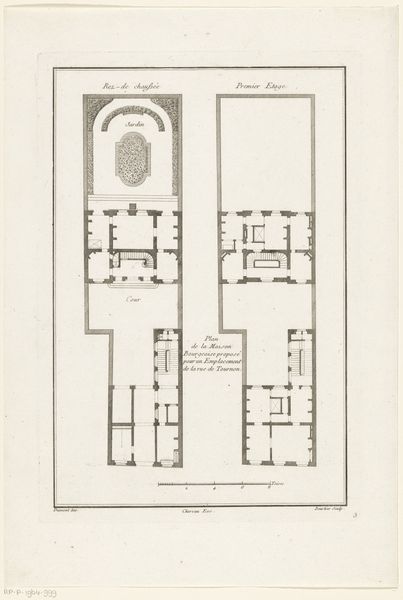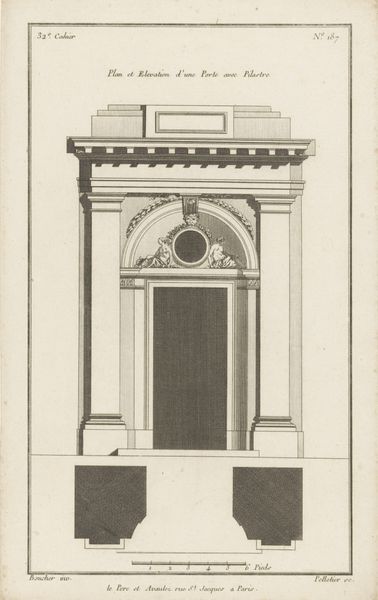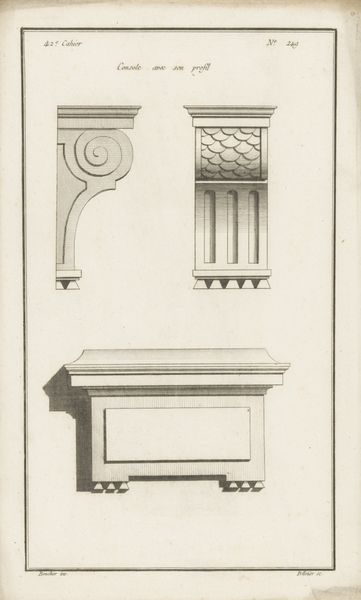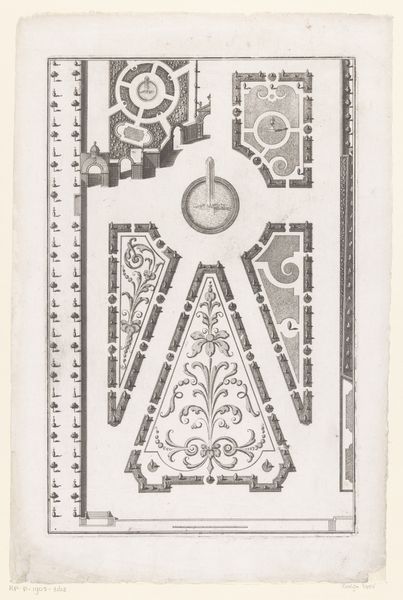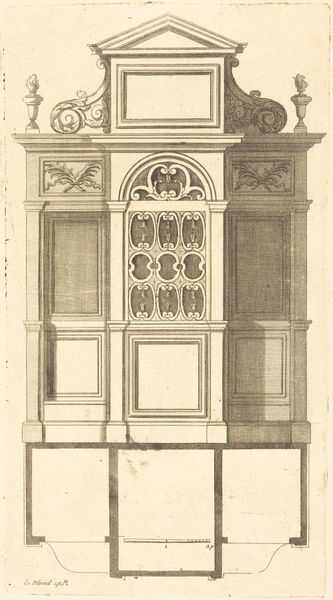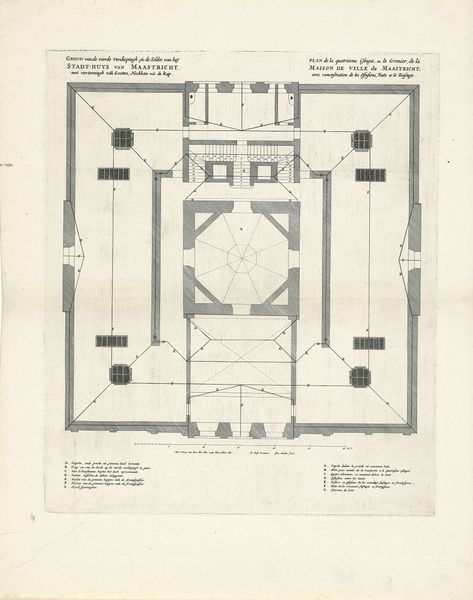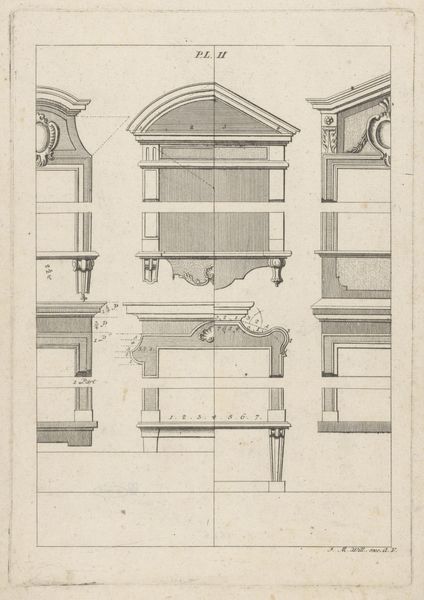
Plattegrond van het Piazza del Duomo te Florence 1733 - 1755
0:00
0:00
drawing, print, engraving, architecture
#
drawing
# print
#
perspective
#
form
#
geometric
#
line
#
cityscape
#
italian-renaissance
#
engraving
#
architecture
Dimensions: height 474 mm, width 334 mm
Copyright: Rijks Museum: Open Domain
Editor: This is "Plattegrond van het Piazza del Duomo te Florence," a drawing and engraving by Bernardo Sansone Sgrilli, dating from between 1733 and 1755. The precision is fascinating, but what can it tell us beyond just the layout of the space? How would you interpret this work? Curator: Considering a materialist perspective, I’m immediately drawn to the labor embedded within this seemingly simple map. The engraving process itself – the tools used, the craftsman's skill, and the time invested – speaks to a very specific social and economic context. The act of precisely mapping public space wasn't a neutral endeavor. It relates to power, ownership and control of the material world. What impact did it have at the time? Editor: That's a great point! So, you're saying the material act of creating this drawing reinforces certain power dynamics. Curator: Precisely! We can consider the availability of paper and ink at the time, and the networks involved in distributing these prints. This wasn't mass production as we know it. Every impression required skilled labor. How does the depiction of the Piazza itself contribute to that dynamic? Editor: It presents an ordered and planned urban space, perhaps idealizing Florence. Curator: Exactly! Consider this not just as an objective representation, but as a deliberate construction meant for consumption. Someone had to want to purchase it, what did that audience want from this material? What would this map be *used* for? Editor: So, beyond just being informative, this image as a material object reflected a particular societal view, didn't it? I hadn't thought about it that way before. Thanks! Curator: Indeed! And understanding the labor and the material context of production can offer fascinating insights. It re-centres art history around practical application.
Comments
No comments
Be the first to comment and join the conversation on the ultimate creative platform.
